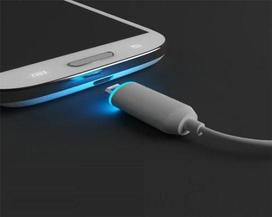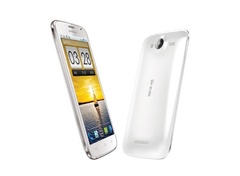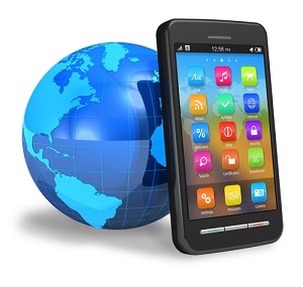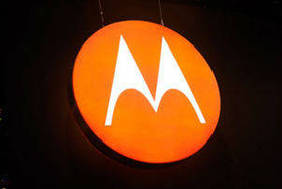 Electronics giant Samsung has announced its plans to launch an enhanced version of its epic Galaxy S4 Smartphone that will transmit data almost twice of the normal speed. The CEO of a South Korean company J.K. Shin, while speaking to Reuters on Monday, said the phone will be available for sale in South Korea by the end of this month. The new S4 will be a bit more expensive than the current one, said Shin, adding the company is in talks with a number of carriers to introduce the device into the other countries. The as-yet unnamed Smartphone will use LTE-Advanced 4G technology, an upgrade from conventional 4G called Long Term Evolution or LTE, to offer speed of up to two times that of the existing LTE device. The Qualcomm chips used in the latest flagship device will be compatible to the upgraded networks. Thanks to LTE-Advanced, a movie which currently takes three minutes to download, will take a little more than one minute, said Samsung. Samsung released a string of variations of smash-hit Galaxy S4 including Galaxy S4 Active and Galaxy S4 Zoom following its global launch in April this year. The original S4, an Android-powered device with the 5-inch full HD Super AMOLED display and a dual camera function, has surpassed all of its predecessors to reach 10 million sales in less than a month, which made it the most successful handset ever launched by the company. Samsung, who emerged as the leader of the Smartphone market last year by selling over 400 million phones, will unveil its new Galaxy devices at an event in London on June 20. For more information on the world of mobile, head to Mobile World Congress 2014 in Barcelona, taking place from 24-27 February, 2014. Contact EAS for best in quality accommodation, marketing and event management. For further information, click here.
 Mobile messaging application WhatsApp has announced a new record for inbound and outbound messages sent in a single day. The company tweeted that it processed 27 billion messages –10 billion inbound and 17 billion outbound messages– in a 24-hour period. It, however, didn’t reveal when exactly it received the new record. WhatApp had handled 18 billion messages – seven billion inbound and 11 billion outbound messages– in its previous record during last year’s New Year Evening. The massive disparity between inbound and outbound numbers is down to the addition of group messages in Whatapp, which means if someone sends one inbound message in a group it could result in several outbound messages to the other group members. WhatApp supports Android, Asha, Windows Phone, Symbian and BlackBerry platforms. Unlike its rivals, the company charges users $0.99 per year for unlimited use. Jan Koum, the WhatApp CEO, recently announced that the company’s monthly active users have been propelled to 200 million, more than Twitter and several other social networking websites. However the service does face stiff competition in the emerging market countries like China, where Wechat, an instant messaging service of country’s social giant Tencent, boasts over 300 million users. In India Nimbuzz and in Japan Line, both have more over 150 million subscribers. WhatApp has signed deals with operators across the globe and has partnered with mobile phone giants Nokia to offer Asha 210 feature phone which physically includes a WhatsApp button. The company’s new record reflects the general shift away from traditional SMS (Short Messaging Service) text being sent by the mobile phone users. Research firm Informa last month reported that the instant messaging apps outnumbered SMS messaging in 2012, for the first time in its 20-year history. It stated that last year 19 billion instant messages were sent compared with 17.6 billion SMS messages per day and predicted that the figure will reach to 41 billion by the end of 2013. For more information on the world head to Mobile World Congress 2014 in Barcelona, taking place from 24-27 February, 2014. Contact EAS for best in quality accommodation, marketing and event management. For further information, click here.
 Vodafone Group has confirmed the long-running speculation that it has been approached by Germany’s biggest cable operator – Kabel Deutschland – about a probable multi-billion dollar take-over, a move which would boost U.K. mobile company’s broadband and TV offerings. According to reports, Vodafone has offered between €81-82 (£68-69) to Kabel Deutschland but it has dismissed the offer citing it as too low. The mobile company is now reportedly considering increasing its offer. Since the unearthing of the U.K. Company’s interest in Kabel Deutschland about four months ago, the shares of the cable firm have rose by as much as 27%. The acquisition of Kabel Deutschland, which has around 8.5 million customers across Germany, would help Vodafone to bolster its mobile and broadband footing in Germany, where it acquired a leading telecom provider – Mannesmann AG – in a takeover worth $180 billion in 2000. Vodafone, the world’s No. 2 mobile operator by revenue after China Mobile Ltd, last month recorded its first revenue drop in eight years, with rivals offering more competitive service bundles. . The U.K. Company is also loosening its clutches over the German broadband operations, acquired in the Mannesmann deal, as Deutsche Telekom AG and Unitymedia Kabel have lured millions of its customers with awe-inspiring packages during the past few years. Since the German takeover law demands the bidders to offer at least the average share price from the past three months, Vodafone would need to put a value on Kabel Deutschland of at least €6.39 billion to proceed with the offer. And if the deal goes ahead, it will be Vodafone Group’s largest since it started operations in India in 2007 and it will look forward to attract more customers by bundling mobile, fixed-line, TV and broadband services. For more information on the world of mobile head to the Mobile World Congress 2014 in Barcelona, taking place 24-27 February, 2014. Contact EAS for best in quality accommodation, marketing and Corporate event in Barcelona.
 Intex Technologies has released its Intex Aqua I-5 Smartphone for the Indian customers. The new Smartphone runs on Android 4.2 and is powered by 1.2GHz quad-core processor. The Smartphone will be offered in two colors –white and black – and is available at a best buy price of Rs. 11,690 (€ 150) at a wide range of retailers across the country. Intex Aqua I-5 has a 5.0-inch qHD capacitive touch-screen. The device comes up with a 2000mAh battery which provides a talk time of up to five hours and about seven days of standby time. The dual-SIM functionality of the phone works on both GSM + GSM technologies, the company affirmed. The Smartphone has 4GB of internal storage which can be expanded up to 32GB through a microSD card and 1 GB RAM. It also features a 2-megapixel front camera and a 12-megapixel rear auto-focus camera with flash. The connectivity options include Wi-Fi, 3G, Bluetooth, A-GPS and micro USB. The device is also equipped with four sensors; Proximity Sensor, G sensor, Motion Sensor and Environment Light Sensor. Some other features of the handset are FM radio, Flip-mute, face screen unlock, voice screen unlock and pattern lock security. Intex Aqua I-5 is expected to make tough competition to the other quad-core device offerings in the sub-continental country that are in the range of Rs 16,000 such as Samsung Galaxy Grand Quattro, Zen Ultrafone 701 HD, Micromax A110Q Canvas 2 Plus and others. Intex, who has released a dozen mid-range Smartphones in the Aqua range, said it is planning to unveil 20 more handsets in the next quarter. The company aspires to sell more than 2 million Aqua handsets in the fiscal year of 2013-2014, which will raise its revenue by 300 percent. For more information on the world head to Mobile World Congress 2014 in Barcelona, taking place from 24-27 February, 2014. Contact EAS for best in quality accommodation, marketing and other special services for mobile world congress 2014.
 A recently published global survey conducted by Google and Ipsos MediaCT states that Israelis are the most fervent Smartphone users in the world. The survey, taken in the first quarter of 2013, was based on the responses of 1,000 global Smartphone users between the ages of 18 and 64. In 2012, the Smartphone penetration in the Israeli market stood at 35%, while so far this year it has gone up to 57%, witnessing a substantial 22% rise. Britain is the only country ahead of Israel, where 62% of the population own Smartphone. Spain came in third with 55% Smartphone users while France and Germany are ranked 4th and 5threspectively with 42% and 40% of their populations owning Smartphones. While Britain slightly edged Israel in terms of Smartphone ownership, but in terms of the device’s usage, the middle-eastern country surpassed all the European countries and America. According to the survey, the most extensive use of Smartphone in Israel takes place at home (87%), at work (77%) or while travelling home from work or during a walk (72%). The survey also revealed the details of Israelis’ Smartphone use habits. The country’s people make more use of searches (93%), applications (86%), maps (84%) and social network updates (82%) than people of any other country. Israelis are also ahead of all other nations in watching videos on the small screens, with 77% viewing the clips on YouTube and other video sharing websites and 48% watching the full length TV shows online. Israeli Smartphone users left the other nations behind them in every possible parameter. However, an area where they appeared more conservative than the other countries, is online shopping with only 31% saying they used their handsets to purchase items online, compared with 46% of Americans and 39% of Britons. For more information on the world of mobile head to the Mobile World Congress 2014 in Barcelona, taking place 24-27 February, 2014. Contact EAS for best in quality accommodation in Mobile world congress 2014, marketing and event management.
 Cell phone manufacturer Motorola, in its bids to make a comeback in the hot-competitive mobile market, has announced it will launch its new flagship device – Moto X – later this year. Moto X, the first Smartphone ever assembled in United States, will be built at a 500,000 square-feet facility in Texas that will create about 2,000 jobs by this October. Motorola has already started hiring for the Fort Worth plant in Texas. The site was most recently vacant but it was once used by mobile phone giants Nokia. The factory will be owned and run by a Singapore-based contract electronics manufacturer – Flextronics International Ltd – which has a long time relationship with Motorola. Moto X will be designed, engineered and assembled in the U.S but all of its components won’t be made there. The likes of screen and processor will be manufactured overseas. Though the specifications of Moto X have not yet been disclosed by the company, it is rumored that its screen and display could be anywhere from 4.5-inches to 5-inches. The phone will use two processors to conserve battery life. While most of the current phones use Gorilla Glass 2 for screen protection, Moto X is expected to come up with an enhanced version – Gorilla Glass 3 – to ensure the maximum screen safety. The phone is said to be water-resistant as well. Motorola CEO Dennis Woodside said Moto X will have the feature of managing ultra-low power sensors; such as in gyroscopes and accelerometers, that can sense which components are currently not being used and shuts them down to conserve the power. In addition to the Moto X, Motorola, which was acquired by Google for $12.5 billion last August, will also launch several lower-end Smartphones this year. For more information on the world of mobile apps head to Mobile World Congress 2014 in Barcelona, scheduled to be held from 24-27 February, 2014. Contact EAS for best Mobile World Congress 2014 Hotels.
 The internet messaging has outnumbered SMS messaging for the first time in its 20-year history, the research firm Informa has found. Thanks to BlackBerry’s flagship messaging service – BlackBerry Messenger – the users of Apple and Google Smartphones can soon send messages over an internet connection free of cost and avoid the fees charged by the telephone carriers. Informa reports that the popularity of instant messages surpassed SMS messages for the first time last year and it is likely to be doubled by the end of 2013. The report states that 19 billion instant messages were sent in 2012 compared with 17.6 billion SMS messages. The firm predicted that the Smartphone users will send 41 billion instant messages this year and this figure will grow to 50 billion by the end of next year. On the other hand, the phone users will send only 21 billion in 2014. SMS service, which was first added to Nokia phones in 1993, remained the standard method for sending short text messages between the phones for two decades. However, in recent years it has met challenges from free instant message applications such as Apple IMessage and WhatsApp. The reason for increasing popularity of these instant messaging tools is that their potential is not limited to text trade between phones and they allow the users to send group messages and share videos and photos as well. Recently, BlackBerry has announced that it is planning to expand the BBM service to Android and iOS devices this summer, a move which may prove to eliminate SMS which has already seen significant decreases in use. The company said BBM service currently has over 60 million monthly active users and more than 10 billion instant messages are sent every day. For more information on the world of mobile apps head to Mobile World Congress in Barcelona, scheduled to be held from 24-27 February, 2014. Contact EAS for best in quality accommodation, superior service, marketing and event management. For further information, click here.
|







 RSS Feed
RSS Feed